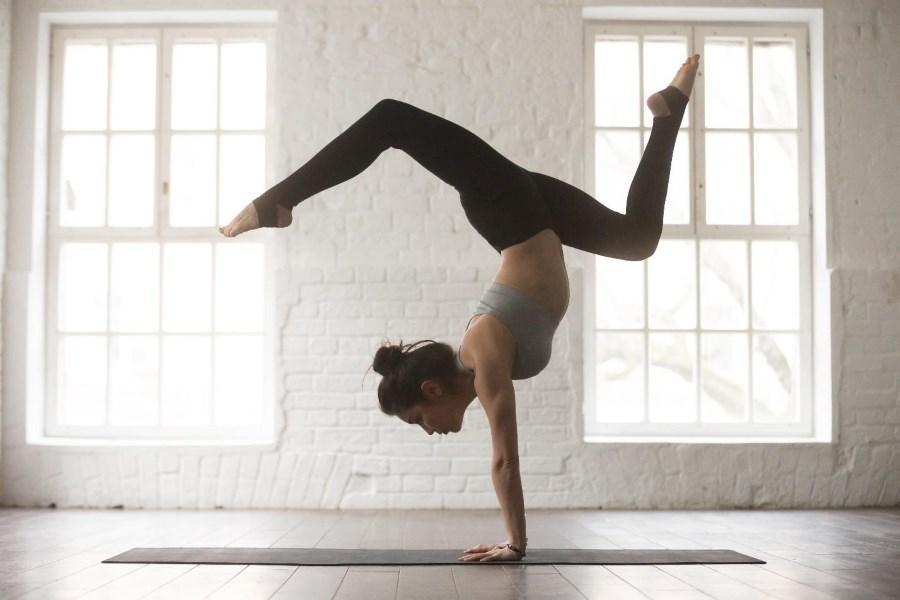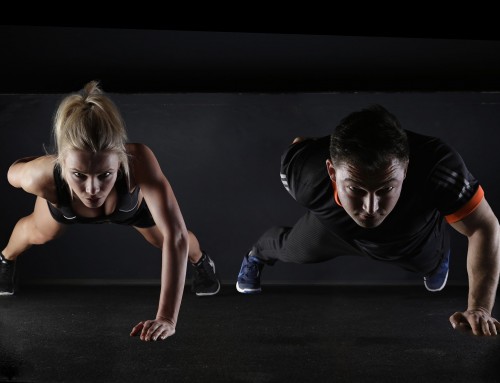5 Yoga Inversion Poses for Beginners

Any good yoga instructor will tell you that inversions are a must in any yoga routine.
Personally, I wasn’t really a big fan of inversions till I seriously gave it a chance.
Inversions are a great practice. I found out that it helps to re-vitalize the nervous system along with the passage of blood flow and oxygen to the brain. Metabolic rates and energy levels are raised as well, so that’s a real bonus.
I won’t lie, the whole prospect of being upside down can be a little scary. But once you get the hang of it you’ll feel that it really is worth it.
That being said, here are 5 inversion poses you can try as a beginner to get you started.
Note: You might also find this Telegraph article interesting if you’re an aspiring yogi.
#1 The Downward Dog
This might come as a surprise but this pose is actually an inversion. Many people, who are not familiar with yoga and inversions in general, think practicing inversions means you have to be upside down completely with your feet off the floor.
This is not necessarily the case, which is why it’s the perfect starting place to get a bit more used to having your head low down close to the floor with the rest of your body above you.
In this particular pose, however, your aim is to lower your head below your heart level. This helps you to focus and involve your core, hands and arms in this position.
To paint a picture in your head, think of forming a triangle with your body. Start by getting on all fours. Bow and place your head down at one end, point your hips upwards and towards your feet, and place your feet firmly at on the floor.
It’s smart to put your feet back as you start to get into the pose. Bring all your weight back towards your legs. Put pressure on your hands during this process.
The most common mistake people make during this pose is that they push their body too far forward. Avoid doing this at all costs. Bend your knees if you have troubles with your hamstrings. Release your head and hold the pose for 5-8 breaths.
At first you may get cramp in your shoulders or arms, but with practice you will get through that. Tight hamstrings are another common problem, which is easy to avoid by bending the knees or keeping the heels higher off of the floor. As you progress, start to apply more pressure to put your heels on the ground.
#2 The Dolphin Pose
This is a great pose for people who are just starting to get into inversions. The Dolphin Pose mainly strengthens the core and upper body.
This is a highly recommended pose to start with. This is the basic and first step you will learn before you master the headstand. So, how does it work?
Begin in the same way you did for the downward dog pose. Get on all fours and lower your elbows enough so that they’re perfectly lined up with your wrists. Put pressure on your thumbs and forefingers and slowly raise your hips and back. Same as the downward dog, hold this pose for 5-8 breaths.
#3 Headstand
This pose requires you to have appropriate strength in your upper body. You need to feel relaxed. Not to mention, feel confident as you attempt this pose.
As mentioned before, you need to master the Dolphin Pose before you start this inversion. Start the basic step of the Dolphin Pose and intertwine your hands together. Make a fist with enough space in between to fit a small circular object, like a tennis ball.
Slowly start to bring your head in between your wrists. Use your forearms and wrists to raise your shoulders up above your ears. Close your legs in as much as you can and hold the pose for 5-8 breaths.
Watch the video above for a better visual explanation of how this should look. It might feel tough at first and very awkward with a lack of balance, but that’s ok, you just need to practice more.
If you’re finding that the moves above are still a real struggle for you and you are not feeling confident, perhaps you need some instruction from a qualified instructor. You can also read up about some tips for starting out in yoga as a beginner.
#4 Use The Wall
The Wall T-Stand is a fantastic pose that pushes you to locate your core. It gives you the freedom to move your legs while you are upside down. If that isn’t fantastic, then I don’t know what is!
Place the mat near a wall and get on all fours. Yes, they begin in the same way. Make sure your feet are near the base of the wall and keep your hands aligned with your shoulders.
It’s essential you do not move forward at all. Slowly raise your waist up and walk one foot up the wall. Level with your hips and do the same with the other leg. Remember to keep your legs straight at all times.
Your ab muscles are going to be on fire but that’s a good thing. Practice with 3-5 breaths and build it up to 5-8 breaths as you gradually get better at it.
You will need a lot of shoulder strength and stability to hold this position. If your shoulders are letting you down (pun intended), try out some weight training at the gym. Start doing shoulder presses and that will build up your strength.
#5 The Shoulder Stand
The Shoulder-stand is like a relaxer and more calmer pose. It’s usually done at the end of most yoga sessions. It’s a peaceful and calm pose to master.
In contrast, it’s also a tough pose that works your entire body the whole time. You need to have very good balance for this because your spine is on the line here.
Take all the necessary precautions before you attempt this pose at first. Place blankets or towels at the end of your mat.
Lie down flat and work your abdominal muscles to lift your legs upwards. Put your weight in your arms and skull, and push the shoulders near the ears.
Once you feel like you are ready, completely focus on your ab muscles and push your legs upward to form a clean line direct upwards. Hold this pose for 5-8 breaths and slowly bring your legs down to finish.
Don’t let them fall directly, take your time and bring them down slowly.
Thoughts and Concerns
Practicing yoga has its advantages. You have a healthier mind, a toned and flexible body. Moreover, yoga is a great way to bring balance to your life in general.
Yoga fixes your immune system and builds up your stamina. It’s not just inversions that help, everything else in yoga is beneficial to us. It’s important and helps with all sorts of pain your body might be having. So keep practicing and remember to breathe!
Putting it all Together
If you’re looking for a YouTube workout for beginner yoga moves, check this one out:
Before you go…
If you’re looking for something a bit more HIIT style as a workout, which you can quickly do in less than 10 minutes make sure to check out my Before Shower HIIT Workouts playlist on YouTube. Here is one which is focused on the upper body:
References
- https://en.wikipedia.org/wiki/Yoga
- https://www.feedfond.com/
- https://www.yogajournal.com/practice


